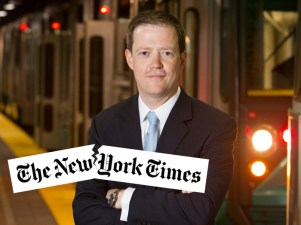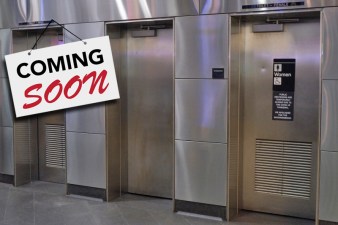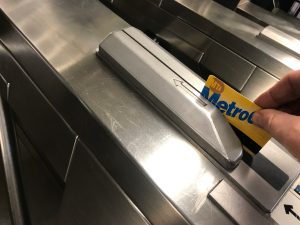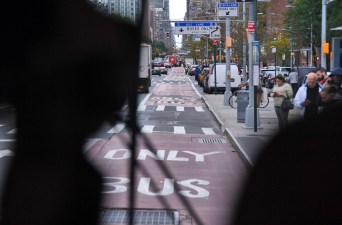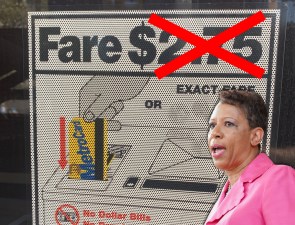Wednesday’s Headlines: Meet the New Train Daddy Edition
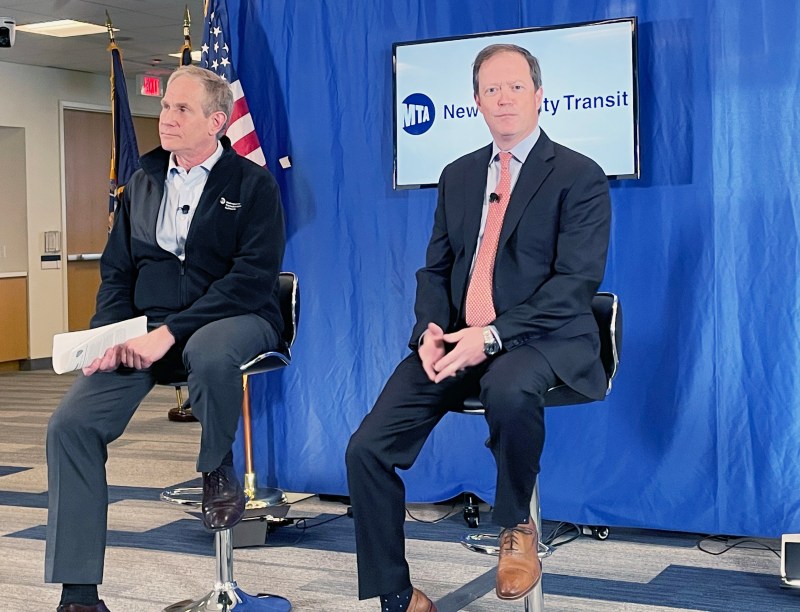
The big news yesterday was incoming New York City Transit President Richard Davey first confab with the press and his inability (for now) to make us forget Andy Byford (ah, we’re such suckers for a British accent on a Train Daddy).
Our own Dave Colon — who was called “David” when it was his turn to ask a question — was on hand and said Davey stayed away from bold pronouncements, focusing on safety, reliability of service, and cleanliness. The former Bostonian went to that well often, and simply demurred when asked point-blank by NY1’s Dan Rivoli if he had a big idea like Byford’s Save Safe Seconds campaign that sped up running speeds on the subway.
“I mean, honestly, there’s probably some new ideas. But candidly, having spent just a few days here, I think it’s taking the ideas that exist and accelerating the heck out of them so that they’re making a difference,” the new subway boss said.
Despite his attempt to not rattle too many cages, Davey did trigger alarm bells when he responded to a question about how he’ll schedule trains in an era where the traditional peak/off-peak ridership patterns have been scrambled. His answer emphasized needing to take a creative new approach.
“We might have to, at least in the immediate, medium-term, adjust our schedule, adjust what we’re putting out based on these norms,” he said. “In my experience, transit systems around the world haven’t been nimble enough when it comes to responding to customers and what they’re doing and what they need. The kind of service that may emerge … is perhaps less of a peak period on Mondays and Fridays, but more of a perhaps midday service or frontline worker service, or even sort of cultural amenity service. … We need to be more creative on how to schedule service.”
It’s too early to say if Davey meant for his remarks to signal something like beefing up off-peak service at the expense of peak service, or just running more trains overall, but transit advocates made sure to let him know they were watching.
“The governor and MTA should not pit public transit riders against one another” said Riders Alliance Director of Policy and Communications Danny Pearlstein. “Rather than cut rush-hour service to add buses and trains at other times, Governor Hochul should invest in service that runs at least every six minutes, all day, every day. New York’s recovery depends on rebuilding and strengthening our transit system. The MTA faces new threats and challenges than before the pandemic and needs increased state investment to be nimble and competitive. Austerity is not the answer.”
As Taylor Swift once sang, welcome to New York! (The Daily News, the Post, amNY also covered.)
In other news:
- A city bus driver hurt a 15-year-old moped rider who may have run a red light in Queens. (NYDN)
- The Harlem woman who was struck by a senior driver who jumped the curb has died. The driver remains uncharged. (NY Post, amNY)
- The Times is right that the city is moving too slowly on electric vehicles, but the car-loving paper didn’t really address the real problem: cars themselves. Yes, there was a brief mention of congestion, but congestion is what car drivers complain about; what about all the ways in which cars endanger, imprison and intimidate the majority of New Yorkers who don’t own one? The Times is always mute on that, as it continually seeks to normalize driving.
- Speaking of the Times missing the trees for the forest, the paper also wants us to focus on buildings, which contribute a lot to greenhouse gases. Of course they do — we spend most of our time in them, doing all the things that we need to stop doing so much of (cooking with gas, running appliances, showering). Yes, buildings are a problem, but it’s they’re a national one. New York’s density means that our building emissions are lower, per capita, than other cities’. Yet given how little time commuters spend in cars — and how bad they are for the environment — we’ll keep focusing on that low-hanging fruit.
- Finally, our friends at CHEKPEDS want to learn how community members would prioritize various uses of the sidewalk and identify the most crucial use of this contested space. The venerable group is hoping you’ll take its survey by clicking here.
